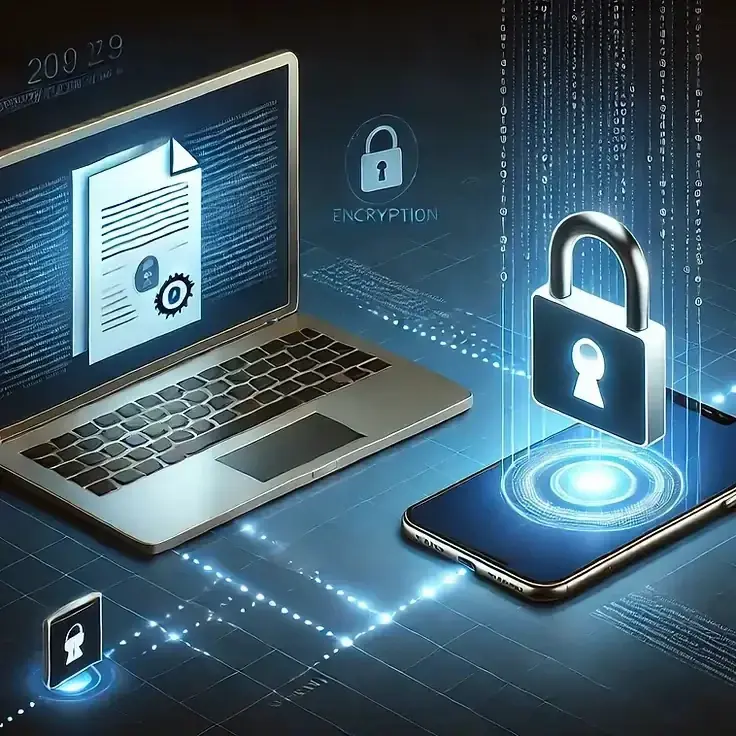When a cybersecurity incident strikes, your primary communication channels may be the first systems compromised. Email servers, internal messaging platforms, and even phone systems can become unreliable or actively monitored by attackers. This is why secure out-of-band communications are essential for effective incident response.
What is Out-of-Band Communication?
Out-of-band (OOB) communication refers to channels that are completely separate and independent from your organization’s primary IT infrastructure. These alternative communication paths ensure that your incident response team can coordinate securely even when main systems are compromised.
Key characteristics of effective OOB communications:
- Physical separation from compromised infrastructure
- Independent authentication not tied to corporate identity systems
- End-to-end encryption to prevent eavesdropping
- Reliable availability during crisis situations
Why OOB Communications Are Critical
1. Primary Systems Are Often Compromised
Advanced persistent threat (APT) actors specifically target communication systems to:
- Monitor incident response activities
- Track investigation progress
- Identify security team members and tactics
- Coordinate counter-measures against remediation efforts
Using compromised channels to coordinate response is like discussing your defense strategy on a party line with the attacker listening.
Standard business communication tools present multiple risks during incidents:
- Email servers may be compromised or contain attacker persistence
- Collaboration platforms like Slack or Teams often sync to attacker-controlled accounts
- Phone systems (especially VoIP) can be intercepted or recorded
- Cloud services may have been used as attack vectors
3. Speed Is Essential
Every minute counts during incident response. Delays caused by:
- Determining which systems are safe to use
- Establishing ad-hoc communication methods
- Coordinating across incompatible emergency channels
- Verifying identities on improvised platforms
These delays directly translate to extended dwell time for attackers and increased damage.
Components of Effective OOB Communications
1. Secure Messaging
Enterprise-grade encrypted messaging that:
- Operates independently of corporate infrastructure
- Provides end-to-end encryption
- Supports group communications for incident response teams
- Maintains audit logs for post-incident review
2. Secure Voice Communications
Encrypted calls that enable:
- Real-time coordination during active incidents
- Secure conference calls for team synchronization
- Independent phone numbers not tied to corporate telecom
- Recording capabilities for documentation
3. Secure File Sharing
Protected document exchange for:
- Sharing malware samples and indicators of compromise
- Distributing incident response playbooks
- Coordinating with external security vendors
- Providing evidence for legal/law enforcement
Implementing Out-of-Band Communications
Planning Phase
-
Identify Critical Personnel
- Incident response team members
- Executive leadership
- Legal counsel
- External security vendors
- Law enforcement contacts
-
Establish Access Methods
- Provide dedicated devices for OOB communications
- Distribute credentials through secure channels
- Test access before incidents occur
- Maintain updated contact lists
-
Document Procedures
- When to activate OOB channels
- Escalation protocols
- Communication protocols
- Evidence preservation requirements
Technical Requirements
Effective OOB communication platforms should provide:
- Zero-knowledge architecture - Provider cannot access content
- Post-quantum encryption - Protection against future threats
- On-premises deployment options - Independence from cloud providers
- Cross-platform support - Work on any device
- Offline capabilities - Function without internet where needed
Testing and Maintenance
Regular testing ensures OOB systems work when needed:
- Quarterly communication drills
- Annual full incident response exercises
- Immediate testing after personnel changes
- Regular credential rotation and access reviews
Real-World Scenarios
Ransomware Attack
Scenario: Attackers encrypt corporate systems including email and file shares.
OOB Advantage: Incident response team uses independent encrypted messaging to:
- Coordinate response without alerting attackers
- Share decryption keys and recovery procedures
- Communicate with ransomware negotiation specialists
- Brief executives on status and options
Supply Chain Compromise
Scenario: Trusted third-party vendor credentials are compromised.
OOB Advantage: Security team uses separate communication channel to:
- Investigate without tipping off attackers via monitored corporate email
- Coordinate with other potentially affected organizations
- Share indicators of compromise with ISAC
- Plan coordinated response with law enforcement
Insider Threat Investigation
Scenario: Suspected malicious insider with access to corporate systems.
OOB Advantage: Investigation team communicates through independent channel to:
- Coordinate evidence gathering without alerting suspect
- Involve legal counsel and HR securely
- Plan simultaneous technical and personnel actions
- Document investigation with audit trail
Cellcrypt for Out-of-Band Communications
Cellcrypt provides the ideal platform for OOB incident response communications:
Security Features
- Military-grade end-to-end encryption for all communications
- Post-quantum cryptography to protect long-term investigation data
- Zero-knowledge architecture - Cellcrypt cannot access your incident data
- Independent infrastructure - Not tied to potentially compromised corporate systems
Operational Benefits
- Instant deployment - Get teams communicating in minutes
- Familiar interface - Minimal training required during crisis
- Cross-platform - Works on any device
- Reliable - Proven in real-world incident response scenarios
Compliance and Governance
- Audit trails for post-incident review and compliance
- Centralized administration for team management
- Evidence preservation for legal proceedings
- Data retention policies aligned with regulatory requirements
Best Practices
Before an Incident
- Deploy OOB systems in advance - Don’t wait for an incident
- Train all incident response team members on OOB tools
- Integrate into IR playbooks - Make OOB activation standard
- Test regularly through drills and exercises
During an Incident
- Activate immediately when compromise is suspected
- Use exclusively for sensitive coordination - Assume all other channels monitored
- Maintain operational security - Limit discussion of tactics on any channel
- Document all communications for later review
After an Incident
- Review OOB communication logs for lessons learned
- Update procedures based on real-world experience
- Rotate credentials after any potential exposure
- Brief stakeholders on effectiveness
Conclusion
Cybersecurity incidents are inevitable, but communication failures during response are preventable. Secure out-of-band communications provide the independent, encrypted channel your incident response team needs to coordinate effectively when primary systems are compromised.
Don’t wait until you’re in the middle of a crisis to establish secure communication channels. Deploy out-of-band communications now, test them regularly, and ensure your team knows how to activate them when every second counts.
Cellcrypt provides enterprise-grade secure communications designed specifically for incident response scenarios. With military-grade encryption, post-quantum protection, and independent infrastructure, Cellcrypt ensures your incident response team can coordinate securely regardless of what systems have been compromised.
Get Started with Cellcrypt for Incident Response | Learn More About Secure Communications



